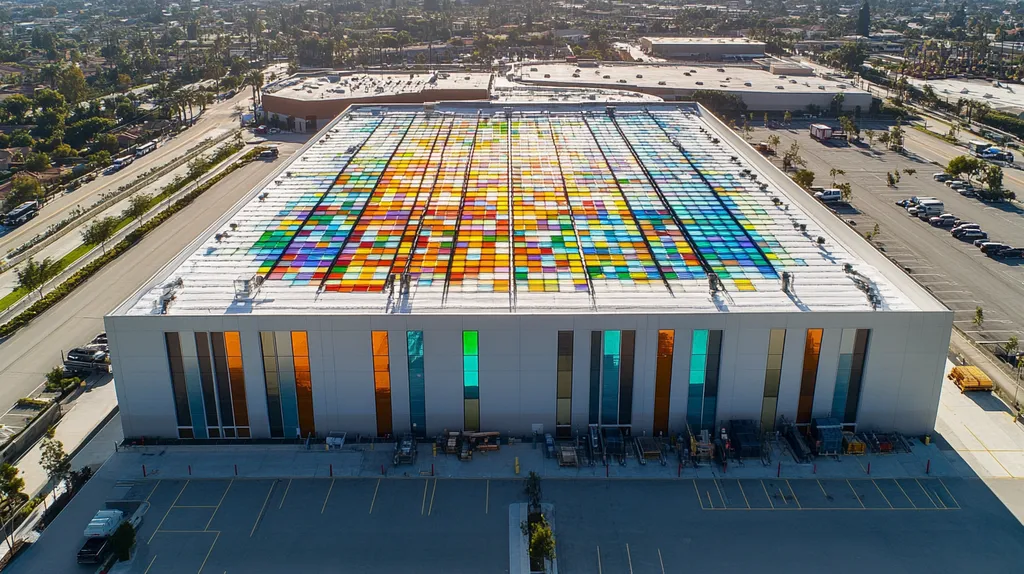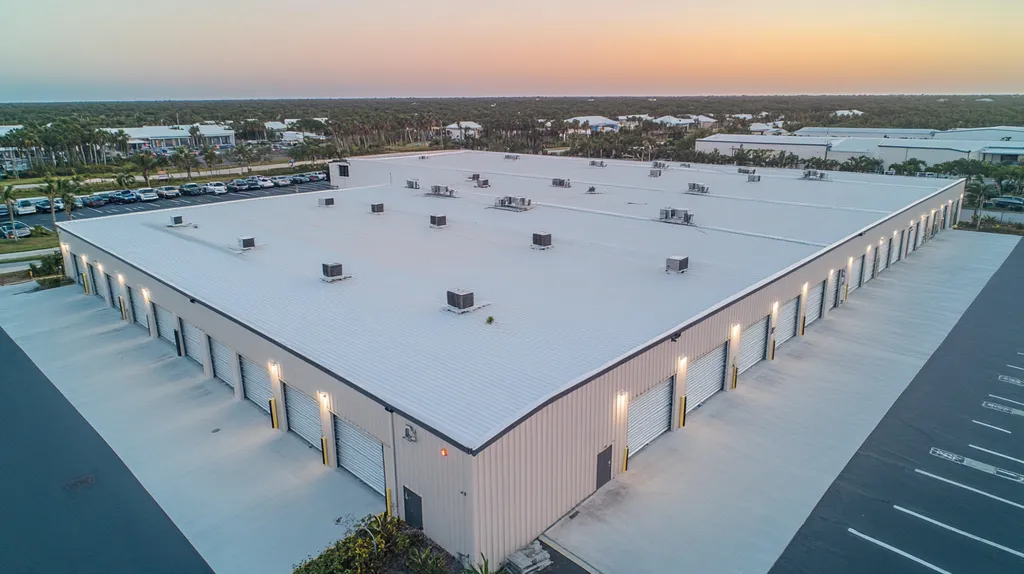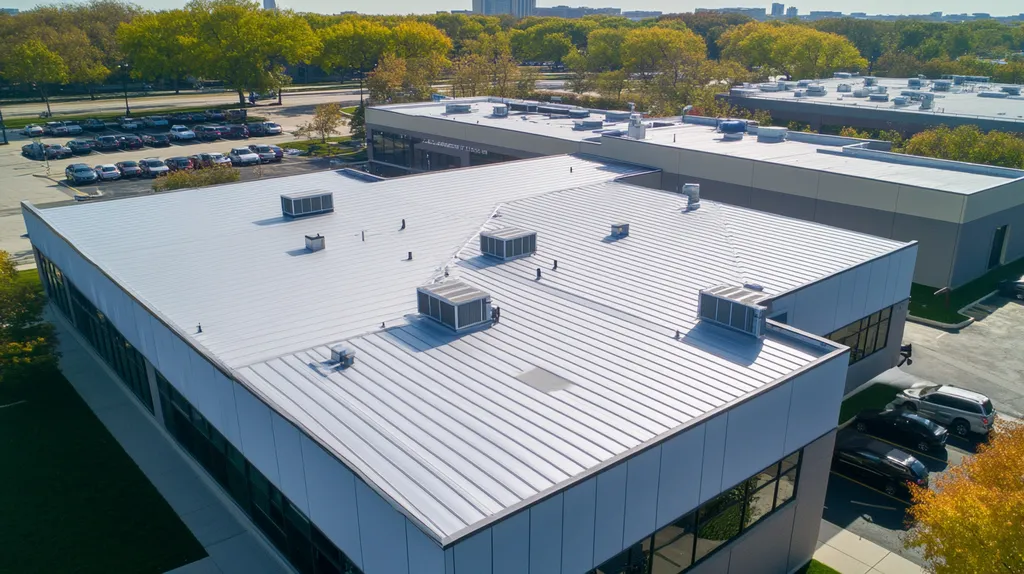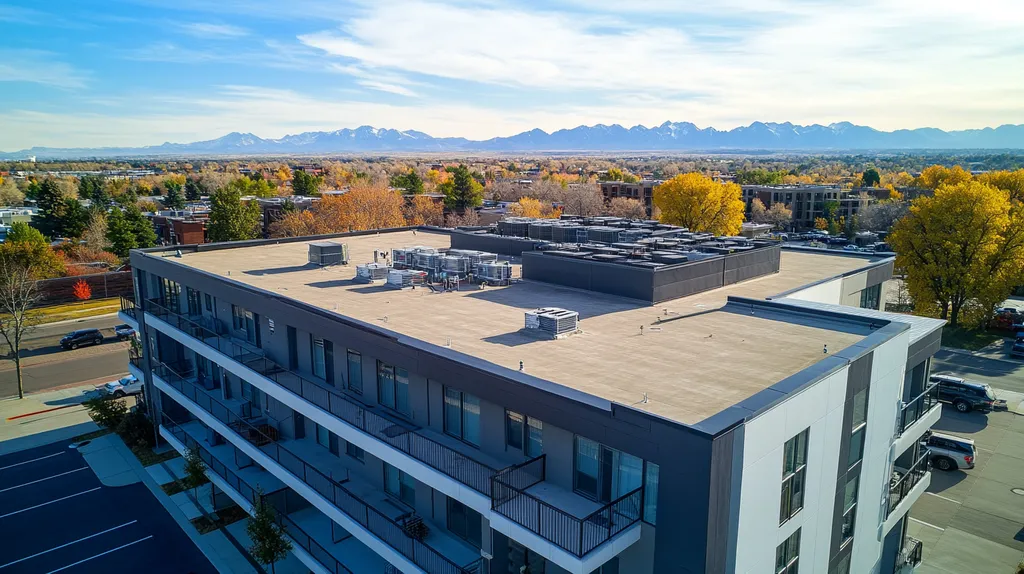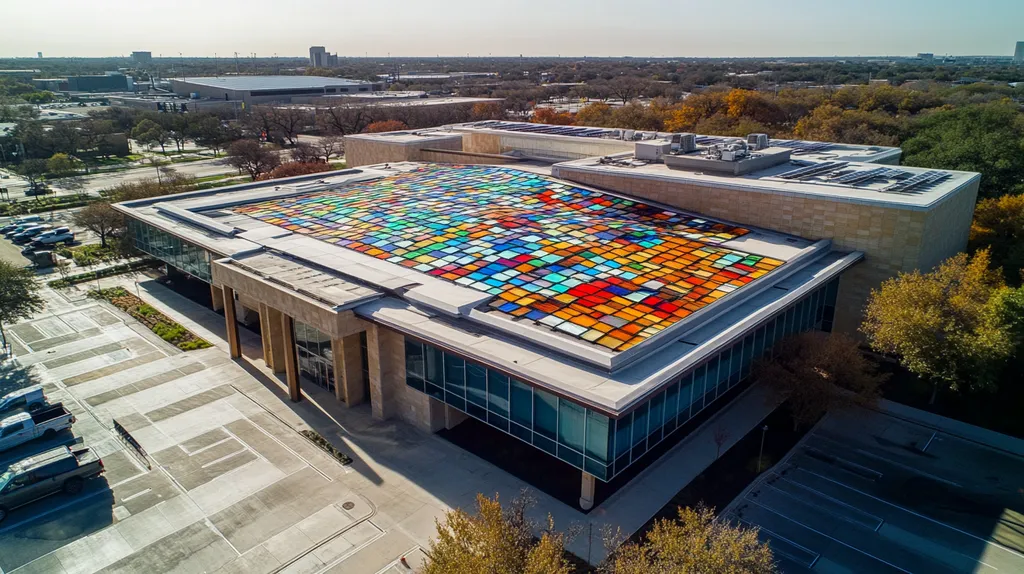Welcome to today’s Battle Royale featuring two roofing heavyweights: “Guardrails” in the east corner versus “Non-Slip Coatings” in the west!
Tonight’s showdown pits these contenders against each other across six punishing rounds designed to test every aspect of their performance for Commercial Roof Slip Prevention.
At stake? Millions in potential costs, decades of building protection, and the critical performance demands of modern commercial and industrial facilities.
Our professional judging panel will evaluate each round on technical merit, real-world performance, and value delivery. After all six rounds, we’ll declare our ultimate champion.
Ladies and gentlemen, facility managers and building owners… it’s time to rumble!
ROUND 1: INITIAL COSTS & INSTALLATION
Every year, rooftop accidents cost businesses millions in workers’ compensation claims, insurance premiums, and lost productivity. When protecting workers and visitors from slips and falls, facility managers must carefully weigh both the immediate and long-term implications of their safety investments. The stakes are particularly high given that roof access is essential for maintenance, HVAC servicing, and other routine operations.
Material Expenses
The upfront investment for rooftop safety systems varies significantly between guardrails and non-slip coatings. Guardrail systems typically cost $35-45 per linear foot for OSHA-compliant materials and components, with premium systems reaching $60 per foot for enhanced durability and corrosion resistance.
Non-slip coatings present a lower initial cost at $3-7 per square foot for commercial-grade products. However, this apparent savings must be weighed against the coating’s effective lifespan and the square footage requiring treatment.
Guardrails represent a one-time capital investment with minimal maintenance costs over their 15-20 year lifespan. In contrast, non-slip coatings generally require reapplication every 3-5 years, depending on foot traffic and weather exposure.
When considering long-term value, guardrails have the clear “ADVANTAGE” in material expenses despite higher upfront costs.
Installation Complexity
Proper installation is crucial for preventing accidents on commercial roofs. Trips often occur due to improperly secured materials, making professional installation essential for both safety solutions. (source: Fall Protection Experts)
Guardrail installation requires specialized equipment, multiple crew members, and careful planning to ensure proper anchoring without compromising roof integrity. The process typically involves engineering reviews, precise measurements, and custom fabrication for corners and transitions.
Non-slip coating application can usually be completed by a smaller crew using standard roofing tools. The process involves thorough surface preparation, primer application, and the coating itself, with minimal specialized equipment needed.
Given the simpler application process and reduced labor requirements, non-slip coatings earn the “ADVANTAGE” for installation complexity.
Project Timeline
Time-to-completion significantly impacts both safety exposure during installation and operational disruptions. Most businesses need to maintain some roof access during safety upgrades, making project duration a critical consideration.
Guardrail installations typically require 3-5 working days for an average commercial roof, not including engineering reviews and custom fabrication time. Weather delays can extend the timeline, as precise measurements and secure anchoring are essential for safety compliance.
Non-slip coating projects can often be completed in 1-2 days, with an additional 24-48 hours for curing. The faster timeline minimizes disruption to roof access and reduces exposure during the installation phase.
With significantly shorter completion times and fewer weather dependencies, non-slip coatings claim the “ADVANTAGE” in project timeline.
ROUND 1 WINNER: NON-SLIP COATINGS
ROUND 2: DURABILITY & LIFESPAN
In commercial roofing, the durability of safety measures directly impacts both worker protection and long-term costs. Falls from heights remain one of the leading causes of workplace injuries and fatalities in the construction industry, making the longevity of fall protection systems critical for ongoing safety compliance.
The effectiveness of any rooftop safety solution depends heavily on its ability to maintain performance over time, especially given the harsh conditions these systems must endure. Understanding how different options perform throughout their lifecycle is essential for making informed safety investments.
Weather Resistance
Commercial roofs face constant exposure to UV radiation, temperature extremes, precipitation, and wind. These environmental factors can significantly impact the performance and longevity of safety systems.
Guardrail systems, typically constructed from galvanized steel or aluminum, demonstrate excellent resistance to weathering. When properly installed, they maintain structural integrity through extreme temperatures, heavy rain, and snow loads without degradation in performance.
Non-slip coatings are more vulnerable to environmental wear. UV exposure can break down the coating’s chemical structure, while freeze-thaw cycles and standing water can compromise adhesion to the roof surface.
For weather resistance, guardrails earn the clear “ADVANTAGE” due to their superior durability against environmental factors.
Maintenance Requirements
Guardrails require minimal ongoing maintenance beyond annual inspections and occasional hardware tightening. Their structural components must withstand a 200-pound force in any outward or downward direction, with midrails rated for 150-pound forces. (source: Occupational Safety and Health Administration)
Non-slip coatings demand more frequent attention, typically requiring touch-ups every 12-18 months in high-traffic areas. Complete reapplication becomes necessary every 3-5 years, depending on wear patterns and exposure conditions.
The substantial difference in maintenance frequency and complexity gives guardrails the “ADVANTAGE” in this category.
Lifespan Value
A properly installed guardrail system typically delivers 15-20 years of reliable service. This extended lifespan helps distribute the initial investment across many years of protection.
Non-slip coatings generally provide effective slip resistance for 3-5 years before requiring complete replacement. While individual applications cost less, the cumulative expense of multiple reapplications over 20 years often exceeds the one-time cost of guardrails.
Given their longer service life and lower total ownership cost, guardrails claim the “ADVANTAGE” for lifespan value.
ROUND 2 WINNER: Guardrails
ROUND 3: PERFORMANCE FACTORS
Safety performance on commercial roofs directly impacts both worker wellbeing and business liability. Recent data shows that rooftop falls remain one of the leading causes of workplace injuries, with inadequate safety measures often cited as a contributing factor. Understanding how different slip prevention solutions perform under real-world conditions is crucial for making informed safety investments.
All-Weather Effectiveness
Commercial roofs face extreme temperature swings, precipitation, and constant UV exposure. These conditions can significantly impact the performance of safety systems, making weather resistance a critical consideration.
Guardrail systems maintain their effectiveness regardless of weather conditions. Their physical barrier remains equally protective during rain, snow, or extreme temperatures, providing consistent protection year-round.
Non-slip coatings can become compromised in wet conditions or extreme temperatures. Ice formation can reduce traction, while thermal expansion and contraction may affect coating adhesion over time.
Given their consistent performance across all weather conditions, guardrails earn the “ADVANTAGE” in this category.
Load Distribution
Trips often occur due to uneven surfaces or shifting materials under load. Proper distribution of weight and forces is essential for maintaining safe working conditions on commercial roofs. (source: Fall Protection Experts)
Guardrail systems excel at distributing loads across multiple anchor points. Their rigid structure provides stable support for workers and equipment, preventing sudden shifts that could lead to accidents.
Non-slip coatings rely entirely on surface friction and don’t contribute to load distribution. Heavy equipment or concentrated foot traffic can accelerate wear patterns, potentially creating unsafe areas.
With superior load management capabilities, guardrails claim the “ADVANTAGE” for this aspect.
Traffic Pattern Adaptability
Roof access patterns often change as maintenance needs evolve. Safety systems must adapt to varying traffic flows while maintaining consistent protection.
Guardrail systems create clear, permanent pathways that guide traffic patterns. Their presence naturally directs foot traffic away from hazardous areas while providing continuous protection.
Non-slip coatings offer flexibility in coverage areas but can wear unevenly with changing traffic patterns. High-use areas may require more frequent maintenance or reapplication to maintain safety standards.
For their ability to maintain consistent protection regardless of traffic changes, guardrails secure the “ADVANTAGE” in adaptability.
ROUND 3 WINNER: Guardrails
ROUND 4: MAINTENANCE REQUIREMENTS
Maintaining rooftop safety systems directly impacts worker protection and business liability. Each year, thousands of workplace injuries occur due to poorly maintained fall protection measures, making proper upkeep essential for both safety and compliance. Understanding the maintenance demands of different slip prevention solutions helps facility managers allocate resources effectively and ensure consistent protection.
Inspection Requirements
Common slip hazards on commercial roofs include wet surfaces from rain or condensation, debris accumulation, algae growth, uneven surfaces, poor drainage, steep slopes, and inadequate lighting. Regular inspections and maintenance are essential to mitigate these hazards, particularly on sloped metal roofs with snow, water, or ice accumulation. (source: Kee Safety)
Guardrail systems require quarterly visual inspections and annual structural assessments. These checks focus on anchor points, connection hardware, and signs of corrosion or damage that could compromise system integrity.
Non-slip coatings demand monthly visual inspections and quarterly performance testing to verify adequate traction levels. Areas showing wear or reduced slip resistance must be identified and addressed promptly to maintain safety standards.
With less frequent inspection requirements and simpler assessment criteria, guardrails claim the “ADVANTAGE” in this category.
Repair Procedures
When safety systems require maintenance, the complexity and duration of repairs significantly impact both operational continuity and ongoing protection. The repair process must balance quick completion with thorough restoration of safety functionality.
Guardrail repairs typically involve straightforward hardware replacement or component tightening. Most maintenance can be completed without specialized equipment or extensive system downtime.
Non-slip coating repairs often require surface preparation, precise material matching, and careful application timing. Weather conditions can delay repairs, while curing times extend system downtime.
Given their simpler repair procedures and minimal downtime requirements, guardrails secure the “ADVANTAGE” in repair complexity.
Long-term Care
Sustained effectiveness of slip prevention systems depends heavily on proper ongoing maintenance. Regular care prevents degradation while extending useful life and maintaining safety performance.
Guardrail systems need only annual hardware tightening and occasional touch-up painting. Their robust construction minimizes wear-related maintenance, with most components lasting the full system lifetime.
Non-slip coatings require regular cleaning to prevent contamination and maintain traction. High-traffic areas need frequent reapplication, creating an ongoing maintenance cycle throughout the system’s life.
The minimal long-term care requirements give guardrails the clear “ADVANTAGE” in this category.
ROUND 4 WINNER: Guardrails
ROUND 5: SUSTAINABILITY CREDENTIALS
As environmental regulations tighten and energy costs soar, sustainability has become a critical factor in commercial roofing decisions. With buildings accounting for nearly 40% of global energy consumption, the environmental impact of rooftop safety systems can no longer be ignored. Property owners must now balance worker protection with their facilities’ carbon footprint and compliance with evolving green building standards.
Material Lifecycle
The environmental footprint of rooftop safety systems extends from manufacturing through disposal. Understanding these impacts helps facility managers make sustainable choices while maintaining safety standards.
Guardrail systems typically consist of galvanized steel or aluminum components that require significant energy during production. However, these materials are almost entirely recyclable at end-of-life, reducing their overall environmental impact.
Non-slip coatings often contain volatile organic compounds (VOCs) that can harm air quality during application. While some newer formulations offer low-VOC alternatives, the frequent reapplication cycle creates ongoing environmental concerns.
With their recyclable materials and longer service life, guardrails claim the “ADVANTAGE” in material lifecycle impact.
Energy Efficiency
Rooftop safety systems can significantly affect building energy performance through their interaction with solar reflection and heat absorption. Proper selection helps optimize overall facility efficiency.
Guardrail systems have minimal impact on roof surface temperatures or building energy consumption. Their open design allows natural airflow while creating minimal shade patterns that could affect solar reflectance.
Non-slip coatings can be formulated with cool-roof technology to reduce heat absorption and lower cooling costs. These advanced coatings contribute to building energy efficiency while providing slip protection.
Given their potential for energy performance enhancement, non-slip coatings earn the “ADVANTAGE” in efficiency.
Maintenance Sustainability
Trips often occur due to uneven or loose surfaces, making proper maintenance essential for both safety and sustainability. Regular upkeep affects both environmental impact and long-term performance. (source: Fall Protection Xs)
Guardrail maintenance typically requires minimal resources beyond occasional hardware tightening and rust prevention. Their durable construction eliminates the need for frequent material replacement or chemical treatments.
Non-slip coatings demand regular cleaning and periodic reapplication, consuming additional materials and potentially harmful chemicals. This ongoing maintenance cycle increases their environmental footprint over time.
With lower maintenance-related environmental impact, guardrails secure the “ADVANTAGE” in sustainable upkeep.
ROUND 5 WINNER: Guardrails
ROUND 6: SPECIALIZED APPLICATIONS
Commercial rooftops present unique challenges that standard safety solutions often struggle to address. From HVAC installations and solar arrays to complex architectural features, these specialized scenarios demand carefully tailored protection strategies. Recent industry data shows that over 30% of rooftop accidents occur in areas where standard safety measures prove inadequate.
Equipment Access Zones
Mechanical equipment zones require frequent maintenance access while presenting unique slip and fall hazards. These areas often combine irregular surfaces, condensation risks, and tight working spaces that challenge conventional safety approaches.
Guardrail systems can be custom-configured to create dedicated access paths around equipment while maintaining OSHA-compliant fall protection. Their modular design allows for strategic placement that accommodates maintenance requirements without compromising safety.
Non-slip coatings offer comprehensive coverage in equipment zones but may degrade faster due to chemical exposure and concentrated foot traffic. While they provide immediate traction improvement, their effectiveness can be compromised by oil leaks and equipment vibration.
For equipment access zones, guardrails claim the “ADVANTAGE” due to their adaptable configuration and durability.
Roof Penetrations
Trips often occur due to uneven surfaces around roof penetrations like vents, pipes, and cable runs. Regular inspections and maintenance are crucial for preventing accidents in these high-risk areas. (source: Fall Protection Xs)
Guardrail systems effectively redirect traffic around penetrations while providing stable support points for workers. Their physical presence creates clear visual markers that help prevent accidental contact with sensitive roof components.
Non-slip coatings can be applied directly around penetrations to improve traction but may require frequent touch-ups due to water pooling and differential movement. Their effectiveness depends heavily on proper surface preparation and regular maintenance.
Given their superior protection and traffic management capabilities, guardrails secure the “ADVANTAGE” for roof penetration safety.
Architectural Features
Modern commercial buildings often incorporate complex architectural elements that create unique safety challenges. These features can include varying roof levels, decorative parapets, and distinctive edge conditions that demand specialized protection.
Guardrail systems can be engineered to complement architectural design while maintaining consistent fall protection. Their clean lines and available finish options help preserve aesthetic intent without compromising safety functionality.
Non-slip coatings struggle to provide adequate protection around significant elevation changes or complex geometries. While they can match architectural finishes, they cannot address the fundamental fall risks inherent in modern roof designs.
For protecting workers around architectural features, guardrails earn the clear “ADVANTAGE” through superior adaptability and complete protection.
ROUND 6 WINNER: GUARDRAILS
AND THE WINNER IS…
After six grueling rounds of technical evaluation, we have our verdict…
Ladies and gentlemen, with a dominant performance of FIVE ROUNDS TO ONE, your new Commercial Roof Slip Prevention Champion is… GUARDRAILS!
The champion showcased extraordinary strength in durability, performance, maintenance, sustainability, and specialized applications. Its ability to provide consistent protection regardless of weather conditions while requiring minimal long-term maintenance proved decisive in this heavyweight bout.
But don’t count non-slip coatings out completely! In situations demanding rapid deployment, lower initial costs, or enhanced energy efficiency, this scrappy contender still packs a serious punch.
IMPORTANT NOTICE: Every facility faces unique challenges based on local climate, roof configuration, and operational requirements. This analysis provides general guidance but cannot account for all variables. Building owners and facility managers should always consult qualified roofing professionals who can evaluate their specific situation and recommend appropriate safety solutions.
Remember, folks: in the high-stakes arena of commercial roofing, there’s no substitute for matching your building’s unique requirements with the right protection strategy. Choose your champion wisely – because when it comes to rooftop safety, there are no second chances in this title fight!
FREQUENTLY ASKED QUESTIONS
Q. What are the initial costs of commercial roof safety systems?
A. The initial costs for safety systems vary. Guardrails typically range from $35 to $60 per linear foot, while non-slip coatings cost about $3 to $7 per square foot. Although non-slip coatings have lower upfront costs, they often require frequent maintenance, which can increase overall expenses in the long run.
Q. How long do commercial roof safety systems last?
A. Guardrails generally provide a lifespan of 15 to 20 years, requiring minimal maintenance. In contrast, non-slip coatings usually last between 3 to 5 years, necessitating regular reapplications, which can increase long-term costs significantly, affecting overall safety investment.
Q. Which system performs better in all weather conditions on commercial roofs?
A. Guardrail systems maintain their effectiveness in all weather conditions, providing consistent fall protection. In contrast, non-slip coatings can lose effectiveness when wet or during extreme temperatures, making them less reliable during inclement weather.
Q. How much maintenance do commercial roof safety systems need?
A. Guardrails require minimal maintenance, typically annual inspections and occasional hardware tightening. Non-slip coatings demand more frequent checks, monthly inspections, and periodic reapplications, making them more resource-intensive over time compared to guardrail systems.
Q. Are guardrails or non-slip coatings better for sustainability?
A. Guardrails are generally more sustainable due to their recyclable materials and longer lifespan, minimizing environmental impact over time. Non-slip coatings, however, may involve harmful chemicals with frequent reapplications, resulting in a larger overall environmental footprint.
Q. How do safety systems adapt to specialized commercial roof applications?
A. Guardrail systems can be customized for areas needing specific protection, like around HVAC units or architectural features. Non-slip coatings might not adequately manage safety in these specialized zones, as their effectiveness can deteriorate due to exposure and wear.
Q. What are the best practices for maintaining roof safety systems?
A. Regular inspections are essential for maintaining safety systems. Guardrails need visual checks quarterly and structural assessments annually, while non-slip coatings should be inspected monthly. Keeping surfaces clean and addressing wear promptly ensures continued safety and compliance on commercial roofs.

